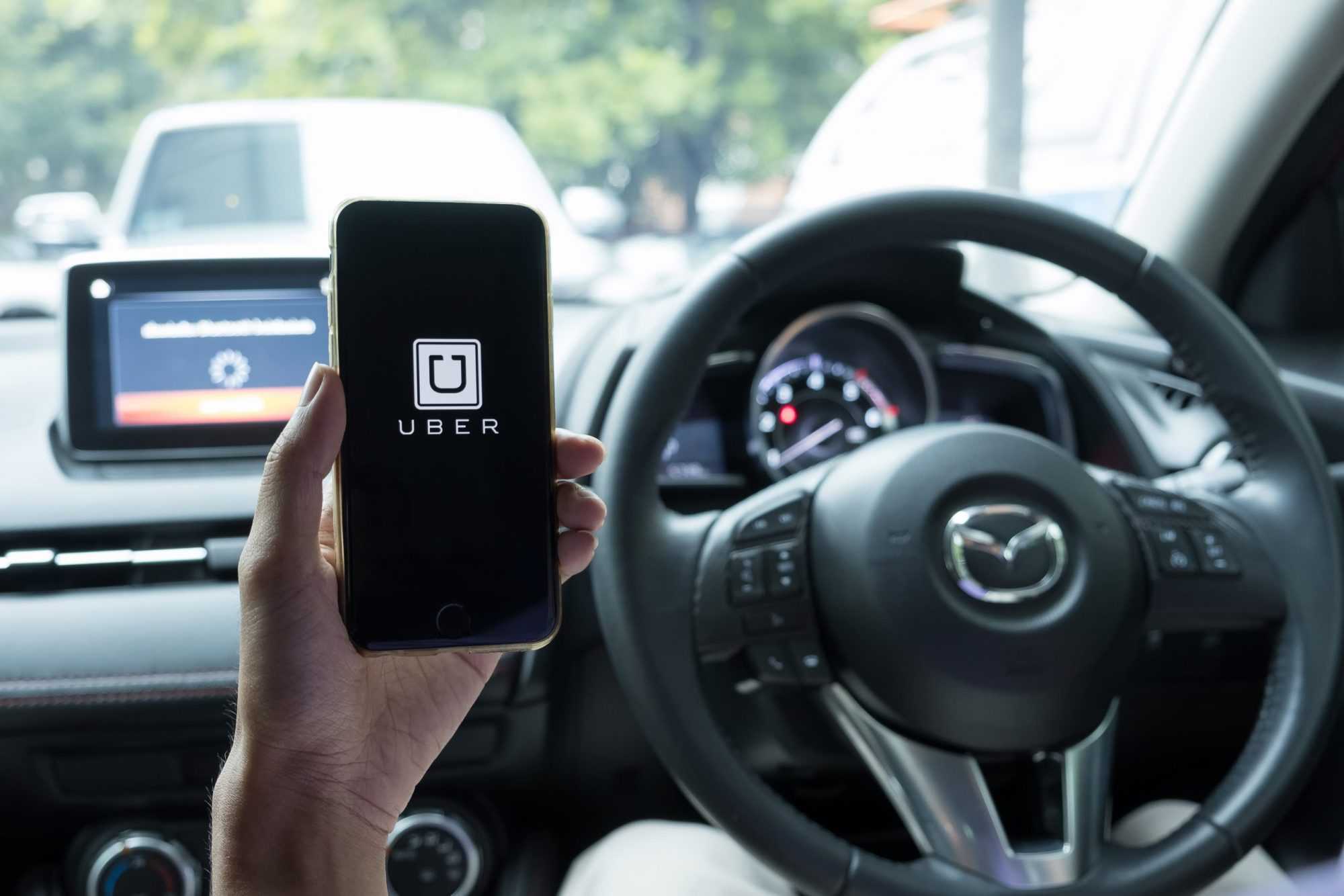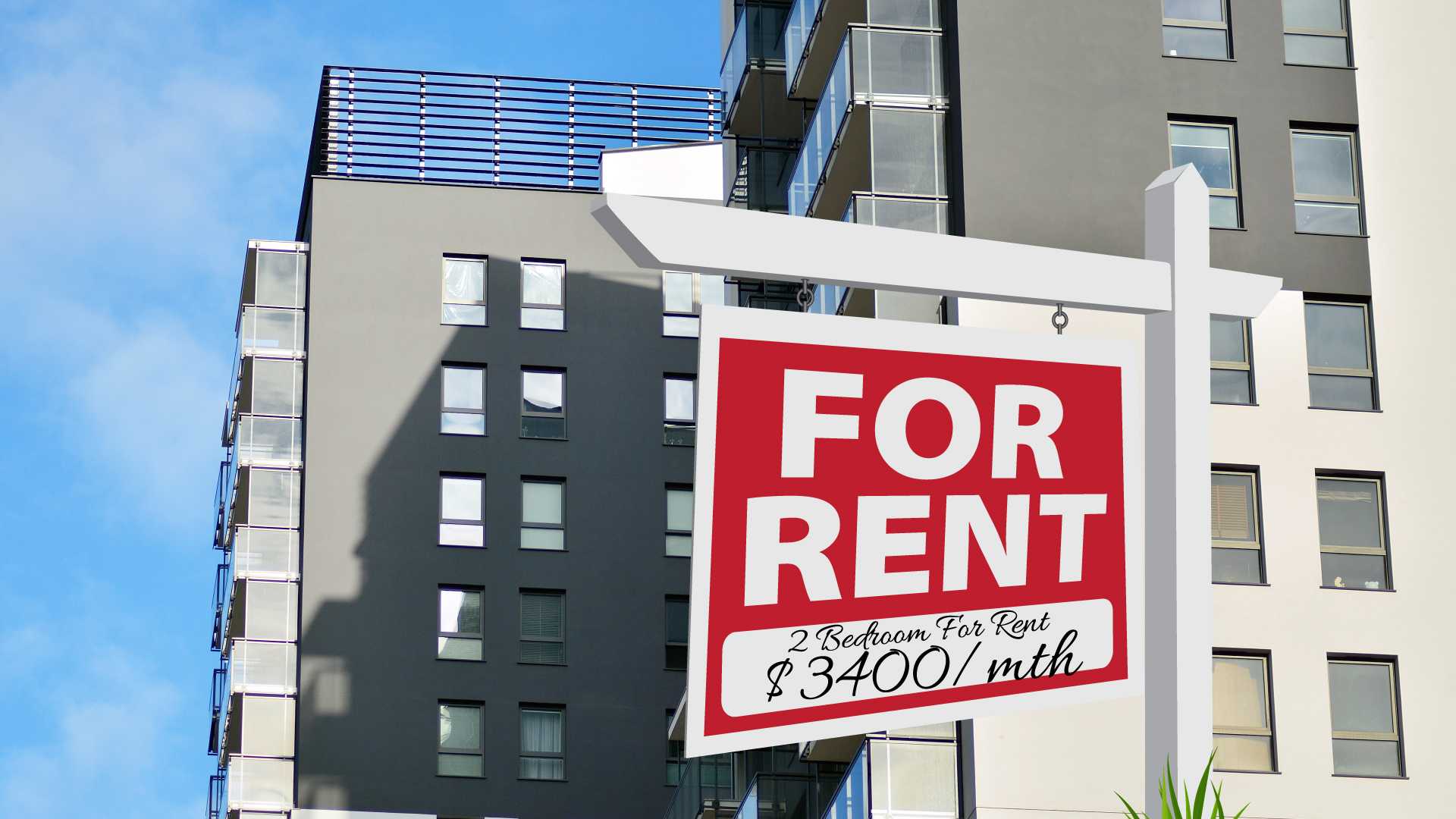Community News
Looking for a side hustle? Uber is not the way to go! A look at Uber’s Unfair Practices
Published
2 years agoon

BY SIMONE J. SMITH
“We are the backbone of Uber’s business model, and we are tired of not receiving the respect and rights we deserve. The time for action is now.” Ejaz Butt (Toronto-area Uber Black Limousine driver and UFCW Union Member)
So, you have decided that you want to take up a side hustle, and you catch an Uber commercial on television. It seems like a good idea; you can do it in your free time. I have some unfortunate news for you; you may want to rethink doing this.
This article is meant to educate anyone who might be thinking about working with Uber; there are some things that have been reported that do not shed Uber in a very positive light. After reading this article, if you are an Uber driver and have experienced anything similar to what is read, NOW is the time for you to speak up; write to your MP and speak out about it. It is the only way that anything will be done.
There have been several negative claims made against Uber about their unfair, and unjust practices. Under the guise of technological innovation, Uber has been allowed to relinquish any responsibility to its drivers, who as a direct result find themselves risking their health, safety, and basic human dignity.
There have been Uber drivers that claim they were fired after refusing unsafe work. In one case, a customer threatened to lodge a complaint against a driver and became violent after the driver asked her to wear a mask while she was in his vehicle. The driver phoned the police who had to remove the customer from the driver’s car.
In another incident, a driver refused to take four passengers in his vehicle as this violated Uber’s explicit COVID-19 safety regulations. The driver believes that the customer who ordered the trip retaliated against him by leaving a bad review and rating.
Drivers reported that they frequently had to deal with intoxicated and impaired customers who were rude, demanding and insulting. When they asked the riders to tone down their behaviour, the riders indicated that they would lodge a formal complaint against the drivers.
There have been other reports from drivers that despite having strong driving records and high customer ratings and reviews, they discovered that the Uber app had been deactivated from their phones following the complaints. They attempted to reach Uber support to dispute the complaints but were unable to learn more or tell their side of the story. Uber support did not follow up on requests for review or make further attempts to contact the drivers.
For all the drivers involved, working for Uber was their chief source of income. The drivers had been working as Uber drivers for several months without incident, and one had over 1,000 five-star reviews on his account. Being fired without investigation and with no protection has devastated these drivers, who rely on working for the app to support their families.
“I bought a new car, borrowed money from my friend and planned to start studying for my future, but my livelihood was stolen from me,” explained driver Bhupinder Singh. “It affected my mental health. I was a top star rating driver and completed more than 2,000 trips and with two false and angry customer accusations, Uber deactivated my account without proper investigation.”
Some UberEATS couriers were stuck earning as little as $3.99 per trip at the start of this year — down from about $10 per trip at the beginning of 2020 after the company lowered base compensation rates. Since most couriers averaged only two or three trips per hour, that put them significantly below Ontario’s minimum wage of $14 an hour.
I had the opportunity to personally speak with a community member who had been working with Uber for two years when he started to notice certain things that literally did not add up.
He has a friendly attitude, and enjoys dialogue, aspects of his character that he brings to his driving position at Uber. During a dialogue with a client one day, he learned something disturbing; his client told him that Uber charged him $50.00 for the drive, and when the driver reached the destination, Uber paid him his share for the drive, which came to $25.00.The driver showed his client what had been paid because they had been discussing this situation during the drive. The client was disgusted and told the driver that he was going to make a complaint.
Another issue that became noticeable is that he would travel twenty minutes from their location to pick up a client. They would then drive the client three minutes away, and only get paid for the three-minute drive. That three-minute payment does not take care of the gas, or time that it took to drive over twenty minutes to pick up the client. He also told me that when you get to your client, Uber gives them up to five minutes waiting time, also five minutes that drivers are not paid for. The rider has to pay for the waiting time, but the driver does not see a cent of that money.
They have a system set up that only allows you to see ahead of time where you will be dropping off your client if you pick up 85% of the clients that are called in, and that you actually pick up. You can’t cancel a ride, or reject a call; if you do it goes against you.
The driver felt that the government should know about the type of economical abuse that Uber drivers are going through.
Thankfully, there are a group of individuals who are standing up for the drivers. Since launching the Uber Drivers United (www.ufcw.ca/uber) campaign in 2019, UFCW has become the leading voice for app-based drivers in Canada, Uber Black drivers in Toronto, and is heading union organizing efforts in British Columbia, Alberta, as well as other parts of the country.
UFCW Canada is the country’s leading private sector union, representing more than 250,000 union members across Canada working in food retail and processing, transportation, health care, logistics, warehousing, agriculture, hospitality, manufacturing, and the security and professional sectors. UFCW is the country’s most innovative organization dedicated to building fairness in workplaces and communities.
“UFCW Canada stands with Uber and app-based drivers around the world in their call for respect and human dignity,” says Pablo Godoy, National Coordinator of Gig and Platform-Employer Initiatives at UFCW Canada. “Both Uber and our governments must be held to account when it comes to protecting workers in the gig economy. We are calling on all activists and allies to support this action to shed light on the Uber drivers who are fighting for their health, safety, labour, and union rights.”
UFCW 1518 is taking the cases of several Uber Drivers to the BC Labour Relations Board by filing an unfair labour practice complaint against giant tech corporation Uber.
Actions the drivers are demanding from Uber:
- End unfair deactivation of driver’s accounts
- Access to data and transparency
- End the unfair rating system
- Provide better health and safety for drivers
- Employment rights (end misclassification of drivers)
- Respect City of Toronto bylaws
Currently, Uber workers in Canada are classified as independent contractors, meaning they decide when to work and what work to do. However, this “flexibility” comes with enormous costs. In Ontario, for example, these contractors have no legal right to a minimum wage, sick days, collective bargaining rights, or breaks.
Uber passes on an employer’s usual costs to its workers, and this leaves them responsible for tasks like vehicle maintenance. This structure of employment has been massively profitable for Uber. The United Food And Commercial Workers union noted that Uber rakes in most of its revenue from the value of the service its drivers provide. The company has the power to terminate those drivers and can to a large degree dictate the terms of their employment. Yet it doesn’t have to pay them a minimum wage or risk ceding any of its power to a union.
In 2020, while many of the company’s workers reported a drop in their compensation rates, Uber chalked up a significant revenue increase. According to Uber’s most recent filing with the Securities and Exchange Commission, while its “mobility revenue” fell, its delivery revenue — “partially offset” by incentives for “delivery people” — increased by $2.5 billion last year.
How has Uber responded to this? They have come up with the Uber, Flexible Work+ plan, which they claim will offer a modern approach to app-based work in Canada. The plan has two key components. The first involves “self-directed benefits,” whereby workers “accrue” funds commensurate to their hours worked in a “flex package.” The workers will supposedly be able to direct this package toward paid time off, education expenses, or insurance.
The second component involves “enhanced worker protections,” described as “training and tools.” Uber claims that this new plan, which looks suspiciously like the old plan, is beneficial to workers.
The union is seeking changes to the Employment Standards Act to enable app-based contract workers like Uber drivers to join a union and receive other basic protections. In a letter to Labour Minister Harry Bains and Parliamentary Secretary Adam Walker, UFCW 1518 asked that the Government of British Columbia amend the Employment Standards Act to enable app-based contract workers like Uber drivers to join a union, classify them as employees and allow them to receive other basic protections.
UFCW 1518 has been working with Uber drivers and other workers in the gig economy to fight for more fairness, better wages, and safer conditions for precarious workers. To find out more about UFCW and its ground-breaking work, visit www.ufcw.ca.
We, as humans are guaranteed certain things in life: stressors, taxes, bills and death are the first thoughts that pop to mind. It is not uncommon that many people find a hard time dealing with these daily life stressors, and at times will find themselves losing control over their lives. Simone Jennifer Smith’s great passion is using the gifts that have been given to her, to help educate her clients on how to live meaningful lives. The Hear to Help Team consists of powerfully motivated individuals, who like Simone, see that there is a need in this world; a need for real connection. As the founder and Director of Hear 2 Help, Simone leads a team that goes out into the community day to day, servicing families with their educational, legal and mental health needs.Her dedication shows in her Toronto Caribbean newspaper articles, and in her role as a host on the TCN TV Network.

You may like
-


14 Days to a healthier work-life balance
-


Freedom Mas Kick off the start of Band Launch Season 2024
-


How Toronto’s Caribbean Community is Leading in Digital Innovation
-


Almost Homeless – Eight years of Justin Trudeau; Canada’s housing is against the ropes, and Toronto renters suffer
-


Tony Duran (Tony Tonez Tattoos) uses education to demystify and destigmatize the tattoo industry
-


It’s time for a New United Regional Nation of the Caribbean

BY SIMONE J. SMITH
I get it; you just like to stay connected. Everyone does it. Sometimes, it seems like you’re not enjoying yourself as much as you used to. Maybe you’re right, but it’s not like you are addicted, or anything. You can stop whenever you want.
It’s not about being addicted, it’s about finding a balance. Social media can be great, but when it starts affecting your mental well-being, that’s when it becomes a problem.
I get it. It’s easy to get sucked into the digital world without realizing it, but it’s important to take breaks, to disconnect and focus on the real world too, and this week we are going to help you navigate the break that you need to take from the digital diaspora.
In a world where many jobs are fast-paced and digitally driven, the constant influx of emails, notifications, and media feeds can feel overwhelming. For many, being inundated with so much information at once can take a real toll on your mental and physical wellness, but what if there was a way to regain control and harmony again?
In a research study titled, “The Relationship between Social Media and the Increase in Mental Health Problems, (Hasan Beyari) the researcher found that deterioration in mental health is one of the side effects stemming from social media overuse. This study investigated the relationship between social media and the increase in mental health problems in Saudi Arabia. Saudi Arabia has a high level of social media usage, with 82.3% of the population (29.5 million people) using social media in 2022. Young people, who make up 36.74% of the population, are the biggest users of social media in Saudi Arabia, with 98.43% of young people using social networking sites. The top three reasons given by Saudis for using social media are: keeping in touch with friends and family, use of free time, and finding products to purchase.
The researcher recommended that social media users be cautious when interacting with social media features, especially likes, comments, followers, media, and posts, because of their significant effect on mental health.
Another interesting research study titled, “Mental Health Surveillance over Social Media with Digital Cohorts,” (Silvio Amir, Mark Dredze and John W. Ayers) the researchers thought that it was worth noting that they found that Blacks and Hispanics who show a high usage of social media were more likely to be affected by mental illnesses. One possible reason for this disparity is that racial minorities are more likely to come from communities with lower education rates and socioeconomic status (SES), and to be in a position where they lack proper health coverage and mental-health care.
I think that you get the point; it might just be time to step away from that device that for some of you has become your lifeline. I want to introduce the 14-Day Digital Detox Challenge, a challenge that was introduced to me by HubSpot. It is a journey that aims to restore balance and mindfulness in your life, both at work and at home. This challenge has tips, tricks, and tools to help you disconnect where you can—even if your job requires you to be plugged in.
Day One starts your 14-day digital detox challenge with mindful mornings that set the tone for the rest of your day and promotes a sense of calm and focus.
Maintaining a healthy work-life balance is crucial for your overall well-being and productivity.
On Day Two of your digital detox challenge, it focuses on creating clear boundaries between your work and personal life.
On Day Three, you have a chance to organize your digital devices and online presence, so that you can enhance productivity and reduce distractions.
On Day Four of your digital detox challenge, your focus will be on establishing a productive routine that enables focused and efficient work while also allowing time for personal activities and hobbies.
By taking care of yourself physically, mentally, and emotionally, Day Five helps you maintain balance and perform at your best.
Day Six helps you understand that by disconnecting from digital devices and engaging in face-to-face interactions, you can strengthen relationships and joy in your daily experiences.
Day Seven has you setting clear goals, tracking progress, and celebrating accomplishments that can increase productivity and maintain motivation.
Day Eight focuses on: incorporating mindful app usage, setting intentional screen time limits, and reflecting on the impact of excessive screen time. The point is to enhance your well-being and productivity.
By implementing techniques such as: creating filters and folders, utilizing email management tools, setting specific times to check and respond to emails, and writing effective emails, Day Nine shows that you can improve your productivity and reduce email-related stress.
Day 10 is all about re-evaluating your relationship with social platforms and focusing on online activities to reflect on the positive and negative effects of social media on your work- life balance.
Day 11 allows you to explore the importance of avoiding digital multitasking and focus on techniques that can help increase productivity and reduce distractions. By prioritizing single-tasking and implementing strategies like the Pomodoro Technique (designed to improve productivity by breaking work into intervals, traditionally 25 minutes in length, separated by short breaks for time-blocking), you can optimize your work and accomplish more.
Day 12 explores the power of mindful communication and how it can enhance relationships, both in the workplace and personal life. By practicing active listening and mindful communication techniques, you can foster empathy, understanding, and open-mindedness in your interactions.
Day 13 explores the benefits of spending time in nature, and how it can enhance your well-being and reduce stress. Engaging in activities such as walks in the park, gardening, or simply observing and appreciating nature can have a profound impact on your productivity and overall mental health.
Finally, Day 14, the final day focuses on reflection and goal adjustment, allowing you to assess the progress you’ve made throughout the challenge and make any necessary adjustments to your goals. By applying self-reflection and goal-setting techniques, you can continuously improve and set yourself up for ongoing success.
Are you ready for your Digital Detox; don’t worry, in 14 days, you can get yourself back on track, and become even more productive than you were before. Good luck, and if you are open to the challenge, let us know how things go.
Community News
Freedom Mas Kick off the start of Band Launch Season 2024
Published
1 day agoon
April 16, 2024By
Paul Junor
BY PAUL JUNOR
It was an entertaining, inspiring and visually exciting day on Sunday, February 25th, 2024, when Freedom Mas kicked off the start of band launch season 2024. In this the third year of the first and only Jamaican band, led by Johanna Grant, the unveiling of the adult and kids’ costumes were showcased under the theme “What If” at the Small Arts Inspection Building in Mississauga near the intersection of Dixie Road and Lakeshore Shore.
The promotional material on Instagram states, “We are bringing the spirit of Carnival through music, dance, and delicious food. Immerse yourself in the rhythm of the Caribbean with live DJs, playing reggae, soca, and dancehall music that will keep you grooving all day long.” They describe what attendees would be able to experience as they “Explore the diverse marketplace filled with local artisans and vendors offering unique crafts, clothing and accessories.”
There was a wide range of vendors present who showcased a range of services and products targeted to the: Black, African and Caribbean community. One of the vendors was Rose & Ruby Jewelry, which offers the Ultimate Jewelry Guide in which everything you need to know about: cleaning, traveling, measuring and maintaining your pieces. I spoke with Antoinette and Norman of Yardpot Catering Ltd about the different types of authentic: products, services and catering they offered. They are proud of their Jamaican roots and willingly promote the varieties of snacks, treats and products.
I spoke to Johanna who has been the band leader of Freedom Mas since its inception about what she expects for Toronto Caribbean Carnival 2024. She is excited to be the first Mas back to start band launch season 2024. The fact that it occurred during Black History Month was intentional and foundational to connecting carnival to its historic roots as a symbol of independence, freedom and empowerment. There were young and old in the audience who witnessed the visually stunning and stimulating costumes that were showcased during the presentation.
There were several sections that were featured at the band launch, which included:
- Phoenix Mist @thebutterflyave
- KADENCE Rhythmic Flow of
- Essence of Dreams-@queentcarnival
- Thoughts of the Future@angelicxarnival
- Port Royal Pirates of the Caribbean
In the audience was Jennifer Michelle Hirlehey, Board Chair of the FMC and CEO, Mischka Crichton, Stephen Dasko, Councilor of Ward 1, as well as Martin Reid, Councilor of Ward 3 of the City of Mississauga enjoyed the festivities and celebrations as they interacted with the audience.
Linden King, former Chair of the Black Caucus of Mississauga came out to show his support as well as MPP Charmaine Williams Brampton North. “This is another celebration of talent and culture and it’s my privilege to see the product of another Black woman and business powerhouse raise others to excellence and be a part of our history.”
Stephen Dasko, Councilor for Ward 1 Mississauga and Region of Peel was in attendance and was pleased with the turnout at the launch and the high level of community support. “Congratulations to Johanna and the team of the Freedom Mas Band for a great afternoon celebrating Black History Month Carnival Edition.”
The dates of some of the upcoming band launches for the Toronto Caribbean Carnival are:
Lux Carnival – Saturday, March 23rd
E.P.I.C. Carnival – Friday, April 5th
Toronto Revellers – Saturday, April 6th
Sublime Mas- Saturday, April 13th
Fantasia Carnival – Sunday, April 14th
Lavway Mas – Friday, April 19th
Saldenah – Saturday, April 20th
Tribal Knights – Friday, April 26th
Carnival Nationz – Saturday, April 27th
Anyone interested in learning about Freedom Mas can check them out at:
Website:http://freedommasband.ca
Facebook: Freedom Mas Band
Instagram: @freedommasbqbd
YouTube:Freedom Mas Band
Community News
Almost Homeless – Eight years of Justin Trudeau; Canada’s housing is against the ropes, and Toronto renters suffer
Published
2 days agoon
April 15, 2024
BY MICHAEL THOMAS
“After eight years of Trudeau, the average price of a home in Toronto is now over a million dollars and the average rent on a two-bedroom apartment has more than doubled to over $3,200 a month. Canadians can’t afford this and that is why in nearly every city, middle-class Canadians are forced to live in tent encampments.”
The above quote is an attempt to write Justin Trudeau’s biography, or part of his legacy by Scott Aitchison, Conservative Shadow Minister for Housing and Diversity and Inclusion.
According to Aitchison, “Justin Trudeau’s response has been to re-announce a failed loan program, which has only resulted in the completion of 11,000 homes over the course of seven years and create more bureaucracy, which will raise the cost of housing even more.”
What exactly is happening here in Canada? Canadians let us look at the numbers and see if they add up.
According to the RBC Housing Affordability Report, in Toronto, a household earning a median income needed to spend 84.8% of their income just to cover the costs of owning an average home at market price. This metric has “reached its worst level ever.”
It now requires 63.5% of income to buy an average-priced home compared to 2015 when the same measure was 39.3%. The income required to purchase a home in Toronto rose by $11,100 in 2023, to $218,100, according to Ratehub.ca.
A home in Greater Toronto was $1,089,800 in February 2024, compared to $601,800 in October 2015. A rise of almost double the cost. Which working-class family can afford this in present-day Toronto? This information is from the Canadian Real Estate Association.
According to the National Bank, it now takes 25 years to save for a down payment in Toronto. The mortgage payment as percentage of income is 87.8% in Toronto.
I hope that this information takes care of the question, why are so many Torontonians homeless or living in their cars? Maybe not. Here are some troubling homeless stats.
“As of October, [Toronto] is sheltering 10,700 people and turning away approximately 275 others on a daily basis,” said Gord Tanner, the city’s Director of homelessness initiatives. “Growing number of homeless people turning to ERs for shelter and warmth in Ontario. In Toronto hospitals specifically, those cold-weather ER visits by homeless people skyrocketed by 68%.”
Let’s look at where our Canadian tax dollars are going and see if any meaningful progress is being made.
The Apartment Construction Loan Program is an existing program that was rebranded in the 2023 Fall Economic Statement. It was previously the Rental Construction Financing Initiative (RCFI) which was created in 2017. When the program was launched in April 2017, it promised $25.65 billion in loan financing and had an original goal of creating 71,000 new rental housing units by 2027/28. However, in the 7 years since the program launched it has committed $18.19 billion in loans, which has only resulted in the completion of 11,208 homes, as of the latest data from December 2023.
After re-announcing and rebranding the program in the 2023 Fall Economic Statement, Trudeau’s government topped up the program with funding for an additional $15 billion in loans, bringing the total available loans to over $40 billion.
Trudeau’s regime was promising Canadians that this additional funding would create 30,000 additional units, bringing the total units to 101,000 even though the program is not coming anywhere close to completing the original 71,000 homes promised to Canadians in 2017.
Now, the Liberals announced that in Budget 2024, they would fund an additional $15 billion in loans, bringing the total to $55 billion even though less than half of the loans already available under the program have been awarded. Once again Trudeau’s regime promised that this additional funding would support the creation of an additional 30,000 new apartment units, bringing the total to 131,000 units promised with only 11,208 or 8.5% completed. In layman’s terms, Canadians’ tax dollars were spent, and they were lied to.
I spoke to Sam Lilly who is the Press Secretary – shadow cabinet from the office of the leader of the Official Opposition. “From 2015 to now, what has happened,” I asked him?
“We’ve seen Justin Trudeau’s inflationary spending and taxes have put pressure on interest rates and cost of living after Trudeau printed 600 billion worth of money.”
“According to CMHC,” Lilly said, “We are short 5.8 million houses in Canada, and those houses have to be built in the next decade and we are way off target.”
“The next problem,” he said, “is that Justin Trudeau keeps giving money to these municipalities that are blocking the permitting of homes. There is a sort of ‘not in my backyard NIMBYism,’ and Justin just keeps feeding them money –no questions asked.”
The alarming rise of almost double the cost in present-day Toronto creates an insurmountable burden for working-class families, rendering housing increasingly unattainable. Such an escalation disproportionately affects marginalized communities, exacerbating the existing economic disparities. The profound impact of this surge extends beyond mere financial strain, as it amplifies societal inequalities, perpetuating cycles of poverty and exclusion. Urgent measures are imperative to address this crisis and safeguard the fundamental right to adequate housing for all residents, regardless of socioeconomic status.
The repercussions of Justin Trudeau’s inflationary spending and tax policies have become increasingly apparent, exerting significant pressure on interest rates and the cost of living. As citizens navigate these economic challenges, it becomes imperative for policymakers to prioritize measures that promote stability, fiscal responsibility, and sustainable economic growth to alleviate the burden on households and ensure long-term prosperity for all Canadians.
BREAKING: New numbers out today show record housing costs after 8 years of Trudeau.
Photo ops, announcements & government spending don’t build homes. pic.twitter.com/HoR2Q2qYE9
— Pierre Poilievre (@PierrePoilievre) April 3, 2024
REFERENCES:
https://www.ratehub.ca/blog/2023-marks-a-terrible-year-for-home-affordability/
https://www.crea.ca/housing-market-stats/mls-home-price-index/hpi-tool/

14 Days to a healthier work-life balance

Freedom Mas Kick off the start of Band Launch Season 2024

How Toronto’s Caribbean Community is Leading in Digital Innovation

Almost Homeless – Eight years of Justin Trudeau; Canada’s housing is against the ropes, and Toronto renters suffer

Tony Duran (Tony Tonez Tattoos) uses education to demystify and destigmatize the tattoo industry

It’s time for a New United Regional Nation of the Caribbean
YOGA: Surya Namaskar (Sun Salutation) for sufferers of hypertension or heart disease
Kemtek Development launches new exclusive gated community in Jamaica!

Ravi’s West Indian Grocery – Fresh Products Weekly Straight from Guyana!

Tourism-Related Live Streaming – The Manifold Ways it Can Create a Buzz for a Destination

ASA Meats & West Indian Groceries – Serving Freshness & Quality to the Community

Do You Have a 407 ETR Story?

Nadine Sutherland – A woman who continues to reinvent herself

Knia Singh – Light Up The Darkness

Spragga Benz – Light Up The Darkness

Kyle Kemper – Light Up The Darkness

David Icke – Light Up The Darkness

Ohio’s Bill 248 and Dr. Sherri Tenpenny’s compelling testimony
Trending
-

 Community News2 weeks ago
Community News2 weeks agoSkills for Change hosts a highly successful connections fair for youth new to Canada
-

 Community News2 weeks ago
Community News2 weeks agoThe Canadian Banking System is set to be radicalized by an open banking framework
-

 Community News1 week ago
Community News1 week ago“It’s a demographic tsunami!” Consensus about the benefits of Canada’s mass immigration is now starting to fray
-

 Community News2 weeks ago
Community News2 weeks agoLooking to tantalize your travel senses? In March it was Better In The Bahamas
-

 Community News1 week ago
Community News1 week agoOntario invests $16.5 million in Black Youth Action Plan to develop skills for in-demand careers
-

 Community News1 week ago
Community News1 week agoCanada’s fails to adhere to its International Human Rights obligations; we can’t have that
-

 Community News2 weeks ago
Community News2 weeks agoYoung people grappling with anxiety disorders and OCD can find substantial relief and improved quality of life in 2024
-

 Community News6 days ago
Community News6 days agoFour helpful tips to get your boss off your back






